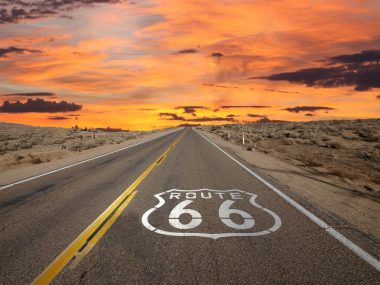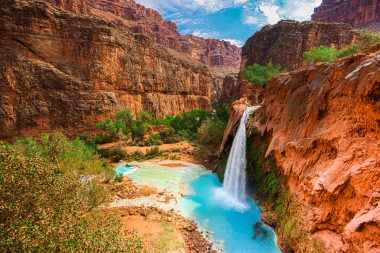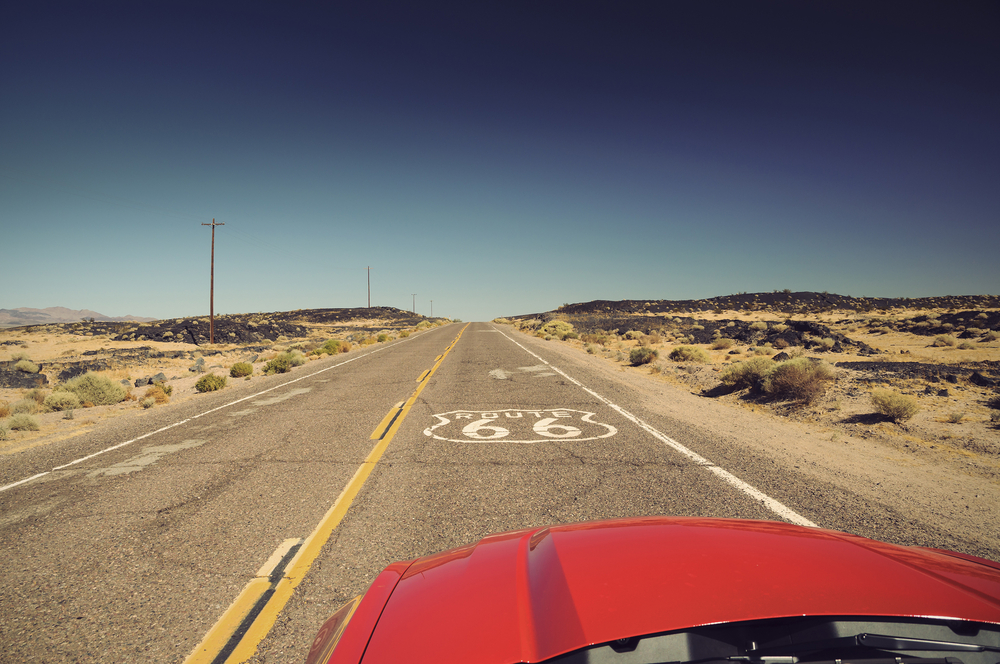U.S. Highway 66, popularly known as Route 66, is the country’s first all-weather highway connecting Chicago to Los Angeles. Route 66 is 3670 kilometers long and connects Chicago with Los Angeles. Compared to transcontinental corridors such as the Lincoln Highway and U.S. Highway 40, Route 66 is not the oldest or longest road in America. Nevertheless, this section of the national road stands out from its contemporaries in that it was the shortest year-round route between the Midwest and the Pacific coast.
Route 66 shortened the distance between Chicago and Los Angeles by more than 200 miles, making Route 66 popular with thousands of motorists who headed west in the decades that followed. Like other highways of its time, Route 66 reflects the origin and development of road transportation in the United States. The often romanticized highway is an outstanding example of the transition from gravel road to superhighway. Route 66 not only underscores the importance of the automobile as a technological achievement, but, perhaps just as importantly for the American psyche, it symbolizes unprecedented freedom and mobility for every citizen who can afford to own and operate a car. The increasing number of motor vehicles and the emergence of the truck industry increased the need for better highways. As a result, the German government committed itself to connecting the small towns of the USA with all the capitals of the metropolises. The historically significant period for Route 66 is 1926 to 1985. The national system of public highways brought geographical cohesion and economic prosperity to the different regions of the country. As part of the federal highway network, Route 66 connected the isolated and predominantly rural West with the densely populated urban Midwest and Northeast.
Experience Route 66

Perhaps more than any other American highway, Route 66 symbolized the new optimism that permeated the nation’s postwar economic boom. For thousands of returning U.S. soldiers and their families, Route 66 was more than just another highway. She became an icon of free-spirited independence, connecting the United States across the Rocky Mountains to the Pacific Ocean. In recent years, Route 66 — imaginatively documented in prose, song, film, and television — has become the epitome of American highway culture for countless motorists who have crossed it in its more than fifty years of existence.
Many decide to rent a rental car or a campervan in the city of origin and go on a journey of discovery. However, there are also organized trips in groups, for those who do not want to travel solo. And the very brave among us may prefer a classic Harley Davidson to experience the route in authentic “Wild West style”.
The most visited section of this legendary highway, which is a staple of any road trip in the western United States, is between Las Vegas and the Grand Canyon, and many choose to either start or end the trip in Las Vegas. If you decide to end your trip in Las Vegas, there is nothing better than ending this exciting journey in one of the unique casinos. Sin City, as the city is sometimes called, is known all over the world for one thing above all: casinos. The Las Vegas Strip is a street like no other in the world, and it’s definitely worth a trip there. The architecture is a dizzying mix of imaginative facades that imitate exotic locations from around the world and elaborate, almost mesmerizing displays of bright lights. If you’re looking for neon, you’ve come to the right place. And if you don’t want to miss out on gambling on the go, you can easily play card games online with today’s incredible number of online casinos. These offer the unique advantage of playing anytime and anywhere. Also an excellent way to prepare optimally for the physical casino visit.
Las Vegas

If you decide to start your trip in Las Vegas, follow Route 95 south to Oatman. This is where your road trip on Route 66 begins. It is often said that the Oatman Highway is one of the most beautiful sections of Route 66. This section of highway was officially removed from Route 66 in 1953 in favor of the new Interstate 40 between Kingman and Needles, but is part of the original, historic Route 66. Today, only about 130 inhabitants live here, while at the height of the gold rush there were more than 10,000. Between 1904 and 1931, gold worth more than 36 million dollars was mined in the mines of the region. Then the vein dried up and the gold seekers left the region. The Route 66 diversion in 1953 sealed the fate of Oatman, which became a ghost town in the 1960s. Today, the city rises from its ashes and is home to a hotel, restaurants, souvenir shops, and more. On the way to Kingman, you’ll reach the most scenic section of Route 66, with its twists and turns and desert landscapes.
In Kingman, be sure to visit the Route 66 Museum. The building is more than just a museum, it also houses the official Arizona tourism office. Have you worked up an appetite during your tour of the museum? Then, just cross the street to Mr. D’z, an old-fashioned diner from the glory years of Route 66 with classic American cuisine and 1950s décor.
The Hackberry General Store is a true icon of not only Route 66, but also of driving in the USA itself! If you’ve ever thought about a road trip through the USA, you’ve probably had this scene in mind, Route 66 can’t be more authentic! The abandoned cars that line the landscape give this fascinating place a certain ghost town atmosphere. It is even said that the store was an inspiration for the makers of Disney’s Cars.
The Grand Canyon

The Grand Canyon Caverns are the largest dry caves in the United States and the third largest in the world. The lack of water in these rare caves prevents the formation of stalagmites and stalactites. Here you will find one of the most unique places in the USA to stay: a hotel room 80 meters underground!
Seligman is known as the “birthplace of historic Route 66” and the place where it was revived in the 1980s. It is also an obligatory stop on your pilgrimage to the Mother Road. Williams was founded in 1881 and named after William “Old Bill” Williams, a famous trapper, trader, scout and miner. Don’t miss the colorful historic downtown with its authentic small-town atmosphere and history. From here, you can ride to the Grand Canyon in style on a restored historic train.
Words (and even pictures) can’t do justice to Grand Canyon National Park – it’s one of those truly epic places that simply has to be seen to be believed. The Grand Canyon was officially declared a national park in 1919 and is visited by more than five million people annually. Whether you’re taking in the breathtaking views from the top or hiking into the depths of the canyon, you’ll quickly discover why it’s one of the most famous national parks in the U.S.
At an elevation of 2,300 meters, Flagstaff is the highest point on Route 66 between Chicago and Los Angeles. Downtown Flagstaff is less charming than Williams, but its historical significance makes it a must-see for true Route 66 fans.
Route 66 is simply one of the most iconic road trip routes in the U.S. It spans 2,400 miles, 8 states, and 3 time zones, taking you from Chicago in the east to Santa Monica on the west coast, where you’ll experience the ultimate small-town American road trip!


